#Nicholas Musuraca
Text






The Ghost Ship (1943)
[letterboxd | imdb]
Director: Mark Robson
Cinematographer: Nicholas Musuraca
Performer: Skelton Knaggs
#1940s#1943#mark robson#val lewton#nicholas musuraca#skelton knaggs#classic cinema#classic film#classic movies#film#american film#my edits#cinematography#cinema#filmblr
21 notes
·
View notes
Text

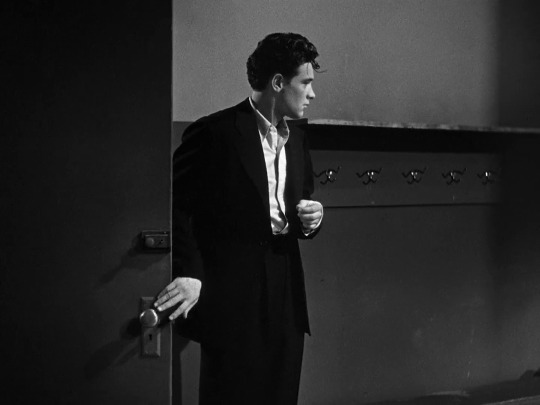
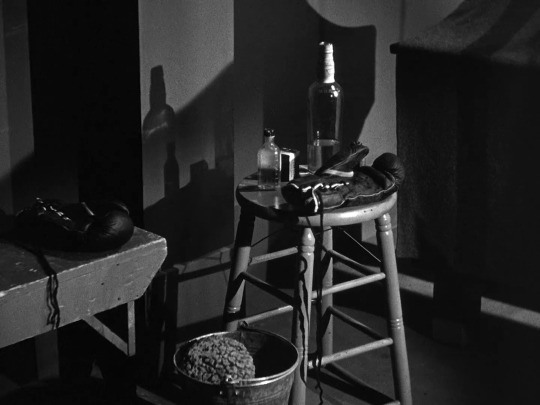
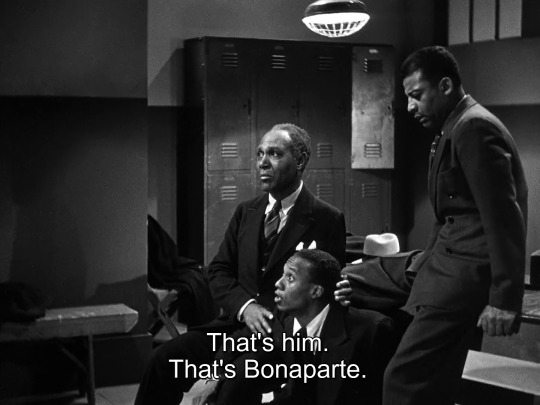

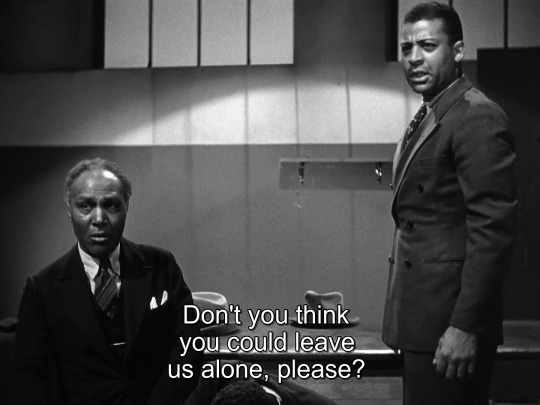
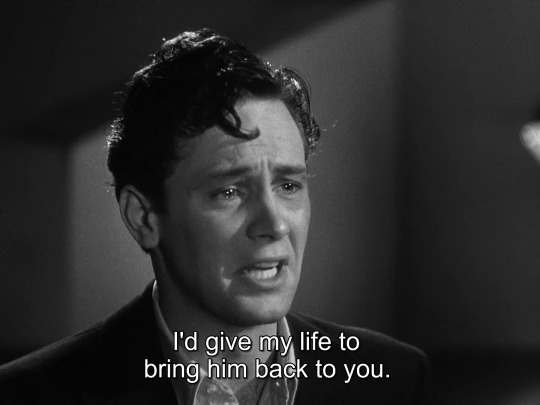


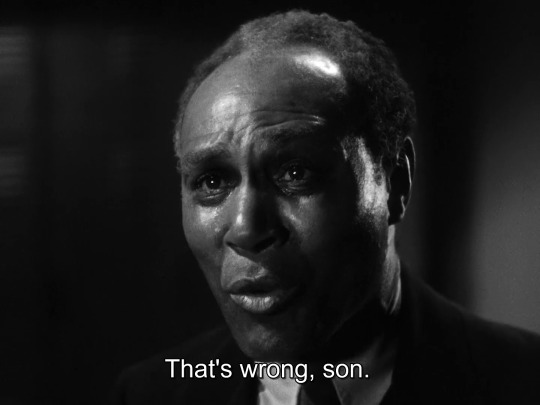
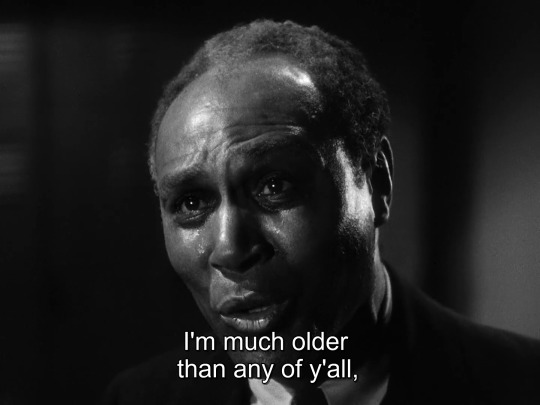
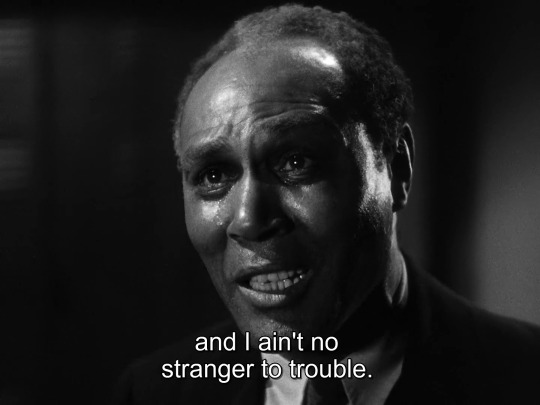
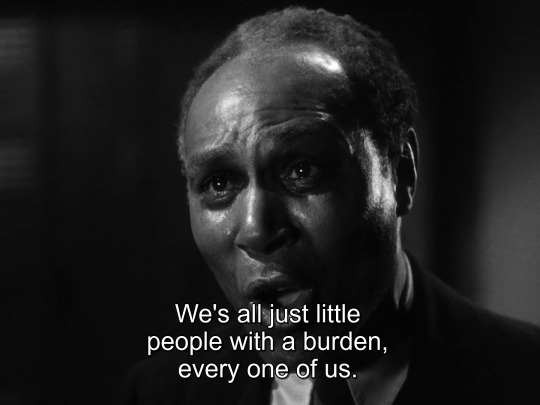

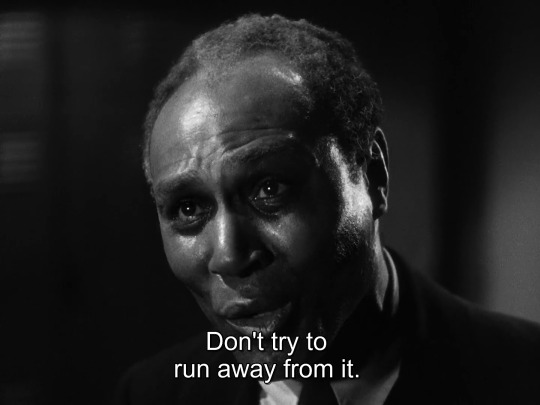

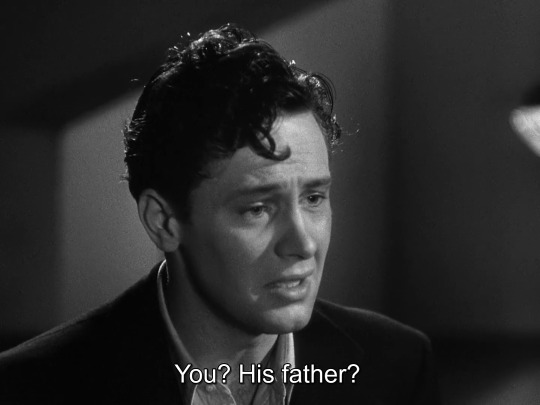
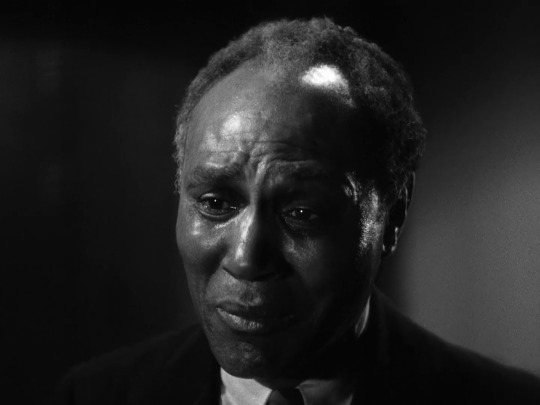
Golden Boy (Rouben Mamoulian, 1939).
#golden boy#golden boy (1939)#rouben mamoulian#william holden#Lewis Meltzer#Daniel Taradash#Sarah Y. Mason#Victor Heerman#Clifford Odets#Karl Freund#Nicholas Musuraca#Otto Meyer#Lionel Banks#Robert Kalloch
21 notes
·
View notes
Text
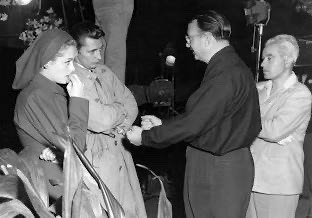
Making OUT OF THE PAST (1947): Jane Greer, Robert Mitchum, director Jacques Tourneur, and cinematographer Nicholas Musuraca #BuildMyGallowsHigh baby
35 notes
·
View notes
Photo

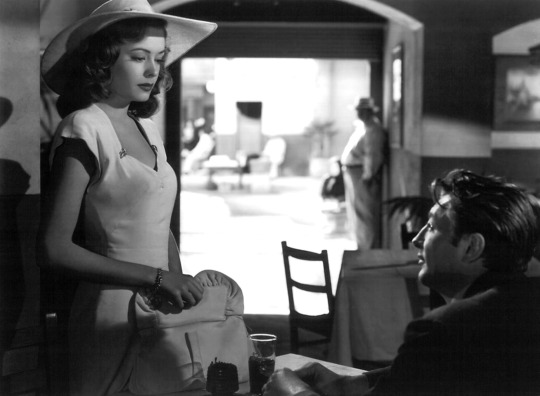

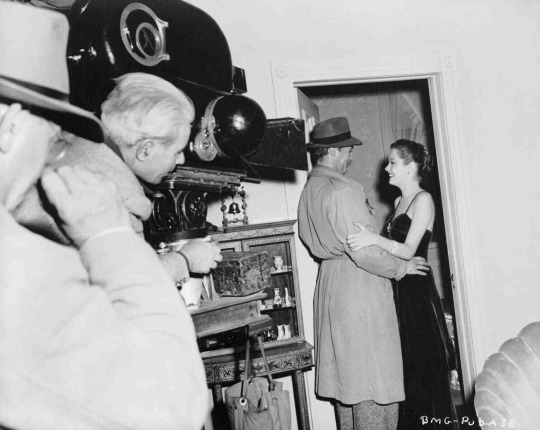
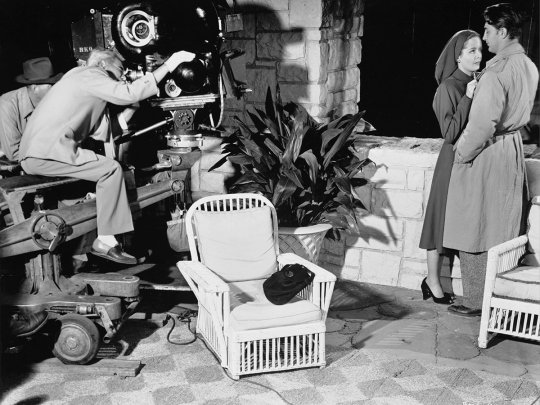

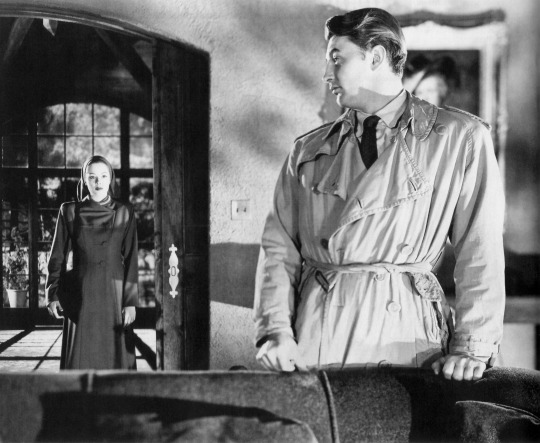

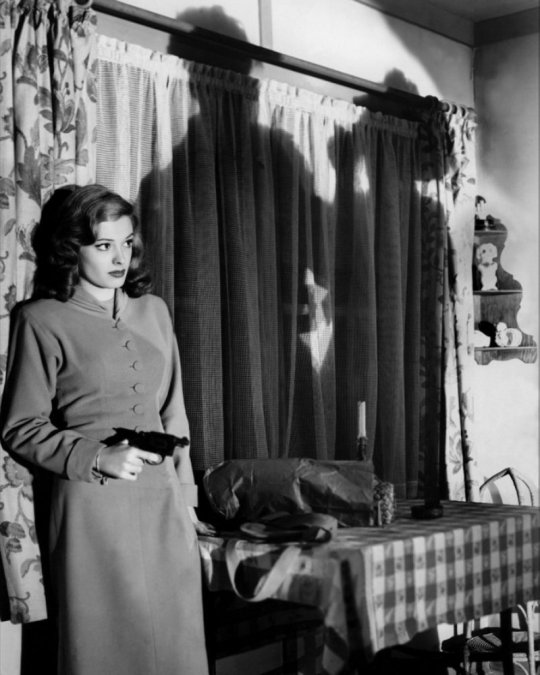
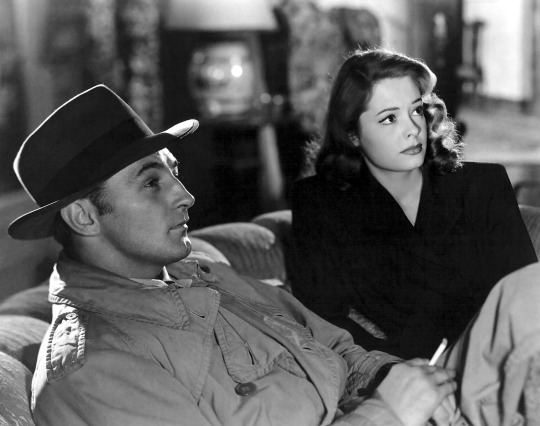
Released on this day in 1947 (#2), OUT OF THE PAST. Considered by many to be the quintessential noir, is it the film that you would pick to illustrate film noir to someone new to the genre? If not, which noir would you pick?
#released on this day#out of the past#robert mitchum#jane greer#kirk douglas#jacques tourneur#nicholas musuraca#noirvember
124 notes
·
View notes
Photo

11 notes
·
View notes
Text
Dread by the Decade: Cat People
👻 You can support me on Ko-Fi! ❤️

★★★★½
Plot: A new bride fears she is cursed and will transform into a panther should she consummate her marriage.
Review: Equal parts unsettling and heartbreaking, this early erotic horror expertly builds tension and explores themes of sexual shame.

Year: 1942
Genre: Supernatural Horror, Creature Feature
Country: United States
Language: English
Runtime: 1 hour 13 minutes

Director: Jacques Tourneur
Writer: DeWitt Bodeen
Cinematographer: Nicholas Musuraca
Editor: Mark Robson
Composer: Roy Webb
Cast: Simone Simon, Kent Smith, Tom Conway, Jane Randolph, Jack Holt

-----
Story: 4.5/5 - Quite shocking for its time and unique in its delivery. It makes the reality of Irena's fears unclear until just the right moment.
Performances: 4/5 - Everyone is great, but Simon is the standout as the terrified and crumbling Irena.
Cinematography: 4.5/5 - Gorgeous. Creative framing, lighting, and camera movements do the work of special effects.

Editing: 4.5/5 - Helps execute what effects could not.
Music: 4/5
Sets: 4/5 - They feel genuinely lived-in, with great bits of foreshadowing laid throughout.
Costumes, Hair, & Make-Up: 4/5
youtube
Trigger Warnings:
Very mild violence (largely offscreen)
Dated psychiatric practices and discussions of mental illness
Animal death
Animal neglect and poor husbandry (real)
#Cat People (1942)#Cat People#Jacques Tourneur#American#supernatural horror#creature feature#Dread by the Decade#review#1940s
14 notes
·
View notes
Text

Born to Be Bad (Nicholas Ray, 1950)
Cast: Joan Fontaine, Robert Ryan, Zachary Scott, Joan Leslie, Mel Ferrer, Harold Vermilyea, Virginia Farmer. Screenplay: Edith Sommer, Charles Schnee, based on a novel by Anne Parrish. Cinematography: Nicholas Musuraca. Art direction: Albert S. D'Agostino, Jack Okey. Film editing: Frederic Knudtson. Music: Friedrich Hollaender.
7 notes
·
View notes
Text
Day 10: Favorite Film Noir Cinematographer. I’m going with Nicholas Musuraca!





11 notes
·
View notes
Text

John Wayne in Haunted Gold (1932), photographed by Nicholas Musuraca. This is his second honorable mention, after Blood on the Moon. He has six entries among my best 1,001, including Cat People, Out of the Past, and The Bachelor and the Bobby Soxer.
5 notes
·
View notes
Text
The Company She Keeps

Jane Greer may have been in the right place at the right time to play Kathie, one of the great film noir femmes fatales, in OUT OF THE PAST (1947), but lightning only struck once for her. She’s one of the most frustrating instances of Golden Age Hollywood not knowing what do with an actress (being one of Howard Hughes’ lust objects didn’t help). She has moments in John Cromwell’s THE COMPANY SHE KEEPS (1951) finer than some performances that were winning Oscars at the time (she would have been terrific in THE COUNTRY GIRL). Watch her here in the department store deciding not to shoplift, and you’re seeing an actress who in a just world would have been raking in awards and box office. Instead, she’s stuck in an interesting if still superficial variation on the eternal triangle. She’s an ex-convict with a chip on her shoulder who falls for parole officer Lizbeth Scott’s boyfriend (Dennis O’Keefe). There are moments when the script calls for nostril-flaring dramatic mugging, but most of the time she’s incandescent. Scott, who wanted a good girl role as a change of pace, doesn’t stand a chance against her, though she gets a few sparks going when she confronts Greer over their romantic situation. Were O’Keefe a weaker actor, it would all read as a lesbian version of triangulation. He’s charming as a newspaper columnist and makes his infatuation with Greer believable. Nicholas Musuraca did the great black-and-white cinematography. Fay Baker is very good as a fellow parolee, with Irene Tedrow as Greer’s landlady, John Hoyt as a judge, Kenneth Tobey as a hash-house waiter and Beau and Jeff Bridges (the latter in his film debut) as kids at Union Station.
2 notes
·
View notes
Text



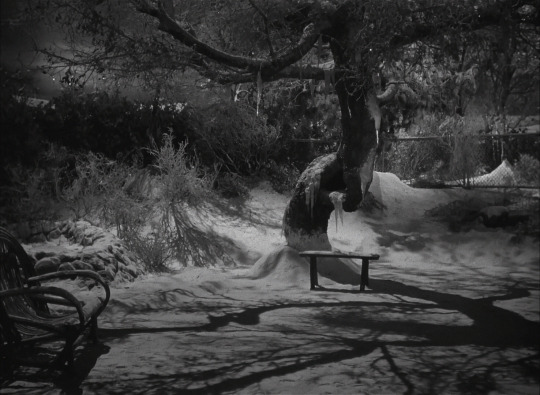


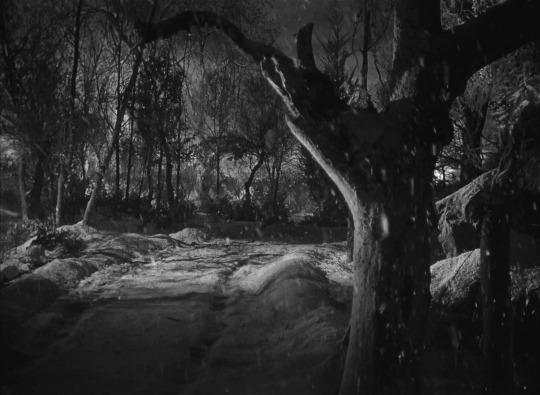


The Curse of the Cat People (1944)
[letterboxd | imdb]
Director: Robert Wise & Gunther von Fritsch
Cinematographer: Nicholas Musuraca
#1940s#1944#classic movies#classic film#film#my edits#american film#classic cinema#cinematography#cinema#Val Lewton#cat people#robert wise#nicholas musuraca
17 notes
·
View notes
Text
"The Cat People," a 1942 horror film produced by RKO Pictures and directed by Jacques Tourneur, stands as a testament to the studio's innovative method of filmmaking. RKO's specific abilities have been instrumental in shaping the distinct ecosystem and tone of the movie.
Central to the movie's fulfillment became the collaboration between director Jacques Tourneur and cinematographer Nicholas Musuraca. Their partnership extended the film to a visual masterpiece. Musuraca's use of light and shadow, a way called chiaroscuro lighting, created a feel of foreboding and thriller. This visible fashion was essential in depicting the transformation of the characters and the anomaly surrounding their feline nature. Tourneur and Musuraca's potential to convey feelings through lights and framing showcased the studio's determination to use visual storytelling.
In addition to the technical brilliance, RKO's casting selections played a pivotal role. Simone Simon, an extraordinarily unknown French actress, became solid as the lead, Irena Dubrovna. RKO's expert scouts identified her capability, and Simon's performance added intensity to the character. Her portrayal of Irena's internal struggles and transformation into a werepanther become hauntingly convincing, contributing drastically to the movie's effect. This knack for figuring out and nurturing talent became the characteristic of RKO's studio subculture.
Furthermore, the movie benefited from screenwriter DeWitt Bodeen's first-rate writing capabilities. Bodeen's script mixed horror, romance, and psychological thriller factors, growing a fascinating and notion-scary narrative. His potential to infuse the tale with depth and complexity highlighted RKO's commitment to driving storytelling.
The Cat People changed in particular style because RKO's exceptional fashion emphasized mental horror and diffused atmospheric anxiety. Unlike other horror movies of its time, RKO chose to rely upon the strength of inspiration in preference to explicit visuals. The worry in "The Cat People" is no longer derived from gore but from the unseen, the unknown, and the profoundly ingrained fears in the human psyche. This unconventional technique placed RKO above different studios, generating horror films characterized by overt violence.
RKO's movies, such as "The Cat People," often explored the depths of human psychology and the supernatural, delving into identification, desire, and the unconscious. Their particular potential to combine mental complexity with atmospheric visuals defined a style that turned into both intellectually stimulating and visually putting. This fusion of expertise and fashion created a cinematic revel in "The Cat People" that is still celebrated for its innovation and artistry, making it an indicator of RKO Pictures' legacy inside the history of the movie.

Brody Feigin
0 notes
Text
STRANGER ON THE THIRD FLOOR (1940) – Episode 142 – Decades Of Horror: The Classic Era
“The only person who ever was kind to me was a woman. She’s dead now.” Wait. What? Join this episode’s Grue-Crew – Chad Hunt, Daphne Monary-Ernsdorff, Jeff Mohr, and guest host Dirk Rogers – as they witness the brilliance of Peter Lorre highlighted by the dark stylings of cinematographer Nicholas Musuraca in Stranger on the Third Floor (1940).
Decades of Horror: The Classic Era
Episode 142 – Stranger on the Third Floor (1940)
Join the Crew on the Gruesome Magazine YouTube channel!
Subscribe today! And click the alert to get notified of new content!
https://youtube.com/gruesomemagazine
ANNOUNCEMENT
Decades of Horror The Classic Era is partnering with THE CLASSIC SCI-FI MOVIE CHANNEL, THE CLASSIC HORROR MOVIE CHANNEL, and WICKED HORROR TV CHANNEL
Which all now include video episodes of The Classic Era!
Available on Roku, AppleTV, Amazon FireTV, AndroidTV, Online Website.
Across All OTT platforms, as well as mobile, tablet, and desktop.
https://classicscifichannel.com/; https://classichorrorchannel.com/; https://wickedhorrortv.com/
An aspiring reporter is the key witness at the murder trial of a young man accused of cutting a café owner’s throat and is soon accused of a similar crime himself.
Director: Boris Ingster
Writers: Frank Partos (story & screenplay by); Nathanael West (uncredited)
Music by: Roy Webb
Cinematography by: Nicholas Musuraca
Art Direction by: Van Nest Polglase
Wardrobe: Renié
Special Effects by: Vernon L. Walker (special effects)
Selected Cast:
Peter Lorre as The Stranger
John McGuire as Mike Ward
Margaret Tallichet as Jane
Charles Waldron as District Attorney
Elisha Cook Jr. as Joe Briggs
Charles Halton as Albert Meng
Ethel Griffies as Mrs. Kane, Michael’s landlady
Cliff Clark as Martin
Oscar O’Shea as The Judge
Alec Craig as Briggs’ Defense Attorney
Otto Hoffman as Police Surgeon
Emory Parnell as Grilling Detective in Dream Sequence (uncredited)
Herb Vigran as Reporter Who Wins Cardgame (uncredited)
Bobby Barber as Giuseppe (uncredited)
Stranger on the Third Floor inhabits the creepier side of, shall we say horror-adjacent, film noir. In fact, some experts argue that it is the first example of that dark genre, later to be labeled film noir. It’s a nightmare-influenced murder mystery featuring Peter Lorre chewing on all the scenery he can. Boris Ingster directs Stranger on the Third Floor with all the style that feels as if it could have been an early Val Lewton production. Yup, it’s Hollywood expressionism, RKO-style. This film is worth the watch, even if only for two 7-minute scenes: the nightmare sequence and the interaction between The Stranger (Lorre) and Jane (Margaret Tallichet).
If you have the urge to view this early example of noir filmmaking (or is it “proto-noir?”), and decide for yourself if it is truly horror-adjacent, Stranger on the Third Floor is, at the time of this writing, available to stream from archive.org or PPV from iTunes. There is also a Warner Brothers DVD available if physical media is your preference.
For more Peter Lorre goodness, check out these episodes of Decades of Horror: The Classic Era:
M (1931) – Episode 113
MAD LOVE (1935) – Episode 81
TALES OF TERROR (1962) – Episode 92
THE COMEDY OF TERRORS (1963) – Episode 75
Gruesome Magazine’s Decades of Horror: The Classic Era records a new episode every two weeks. Up next in their very flexible schedule, as chosen by Daphne, will be Diabolique (1940, Les Diaboliques), the French classic directed by Henri-Georges Clouzot, based on a novel by Boileau-Narcejac.
Please let them know how they’re doing! They want to hear from you – the coolest, grooviest fans: leave them a message or leave a comment on the Gruesome Magazine YouTube channel, the site, or email the Decades of Horror: The Classic Era podcast hosts at [email protected]
To each of you from each of them, “Thank you so much for listening!”
Check out this episode!
0 notes
Photo

Today at the Turner Classic Movies Film Festival, FNF board member Alan K. Rode will be introducing Robert Wise's BLOOD ON THE MOON (1948), 3:30pm at the TCL Chinese Theatre, House 4.
TCMFF program notes:
Though the Westerns was far from his favorite genre, director Robert Wise broke through with one that he always claimed was his “first big feature.” He only directed two other Westerns in his distinguished career, which may account for the fact that rather than being a paean to the wide-open spaces, Blood on the Moon is more of a psychological study. It combines the Western with film noir, a style with which its director, star Robert Mitchum, and cinematographer Nicholas Musuraca were already quite familiar.
Mitchum stars as a cowboy who comes to the aid of an old friend (Robert Preston) in a conflict between a cattleman and homesteaders. Preston’s goal is to force rancher Tom Tully to sell his herd at a loss, but, disgusted with his friend’s underhanded tactics and more than a little attracted to Tully’s tomboy daughter (Barbara Bel Geddes), Mitchum switches sides, leading to a series of violent confrontations.
Wise had moved from the editing room to the director’s chair with producer Val Lewton’s noirish horror films The Curse of the Cat People (1944) and The Body Snatcher (1945). Just before Blood on the Moon, he had directed his first true noir, the low-budget Born to Kill (1947), with Lawrence Tierney and Claire Trevor. Musuraca was a master of light and shadow who had also worked for Lewton along with filming the quintessential noirs The Spiral Staircase (1946) and Out of the Past (1947). The latter had made Mitchum—whose morally ambiguous, surly image was perfectly suited to the style—one of the kings of the genre. All of that came together in the moody, intense Blood on the Moon. Although a critical and box office success, the film was initially overshadowed by such epic 1948 westerns as Red River and Fort Apache. Over time, however, the film has attracted a devoted following who rank it among the best examples of Western noir.
d. Robert Wise, 88 minutes, 35mm
Courtesy of Warner Bros. Classics and Park Circus LLC. Print courtesy of the BFI National Archive
5 notes
·
View notes
Photo

7 notes
·
View notes
Text
Tower of trample save editing

#Tower of trample save editing movie
#Tower of trample save editing professional
McNally is a cruel tough guy who becomes gentle when speaking to his friend, and he's determined not to leave him behind. Seen with modern eyes, the friendship between McNally and his injured pal is something to behold. Since Smith's husband is a doctor, McNally calls him and threatens him with Smith's life so he will come and save the wounded escapee. They all wind up on an atomic bomb test site, and there's a test set for the next day. Before long, they have four hostages: Keith Andes, who plays a reporter, and Jan Sterling, who hitched a ride with him. At a gas station, they carjack Alexis Smith and her boyfriend. McNally, meaner than dirt, escapes from prison with two cronies, one of whom has been badly wounded.
#Tower of trample save editing movie
"Keep that up and you'll be shaking hands with Ashley." It's too modest to be a masterpiece, but I enjoyed it from beginning to end.ĭick Powell directed "Split Second," a B movie starring Stephen McNally, Jan Sterling, Alexis Smith, Richard Egan, and Keith Andes, about prisoners and their hostages at an atomic test site. The salesman's dead body lies outside, and there are a couple of half-joking references to it. It's a mistake on his part because he loses the bet, and Smith, it turns out, isn't worth it anyway. None of the characters is given any complexity, with the possible exception of McNally and his concern for his wounded partner ("the only friend I ever had") and, surprisingly, the insurance salesman who should have been painted as a gutless lounge lizard but instead heroically puts his life at risk to save the honor of Alexis Smith. The direction - Dick Powell's initial effort - is functional if not memorable in any way.
#Tower of trample save editing professional
The performances are up to professional standards. The situation generates a good deal of tension. For the survivors - all of them worthy citizens - there is a deus ex mine shaft. The ending has a car hurtling around the dusty roads like a rat trying to escape a cat, a few minutes before the blast. He extorts a sexual favor out of Alexis Smith - who looks just fine, by the way. He pistol whips the grizzled Arthur Hunnicutt. McNally gets to beat hell out of reporter Andes and sluttish Jan Sterling. There are a good number of other dramatic incidents (well photographed by Nicholas Musuraca, who knows his way around a noir setting). But McNally has a soft spot too - for the suffering Paul Kelly, lying there with a hole in his belly. He shoots and kills the insurance salesman for challenging McNally's manhood as McNally takes the terrified Alexis Smith into the kitchen "to make coffee" and closes the door behind them. The social dynamics resemble those of "The Desperate Hours." The overall structure is more like that of "The Petrified Forest." The thermonuclear device is added as lagniappe, reminding us of lines from Edgar Allan Poe's poem, "The City in the Sea" - "While from a proud tower beyond the town, Death looks gigantically down." McNally plays it tough. The drama works itself out in the broken-down, dusty bar room. Everyone knows about it, and they react with different degrees and modalities of anxiety. The village in which they are ensconced is about to be vaporized by an atomic bomb explosion at six the next morning. So now - I hope you're following this - there are three criminals holding a diverse group of six people hostage. Before leaving the highway, McNally rang him up, told him the situation, and threatened to kill Smith if Egan didn't immediately fly to Las Vegan, rent a car, and join them at the ghost town in order to treat the wounded Paul Kelly. Smith's husband, Richard Egan, is a doctor back in Los Angeles. They turn off the main road and hunker down in a bleak and dilapidated village where they take the sole resident, prospector Arthur Hunnicutt captive as well. Now a party of five, they run out of gas, flag down the next car that comes along, and hijack the car and ITS two passengers, reporter Keith Andes and his newly found friend, nihilarian Jan Sterling. The three miscreants pull their stolen car into a remote gas station, murder the proprietor, and hijack the next car that pulls in, along with its two occupants, the adulteress Alexis Smith and her insurance-salesman boy friend on their way to Reno. Kelly won't be able to make it without medical attention. The plan is to hide out overnight in a desert ghost town, then pick up a quarter of a million dollars stashed away somewhere and run off to a tropical beach. Two men, Steven McNally and Paul Kelly, the latter with a bullet in him, escape from prison and are picked up by their associate known as "Dummy".

0 notes